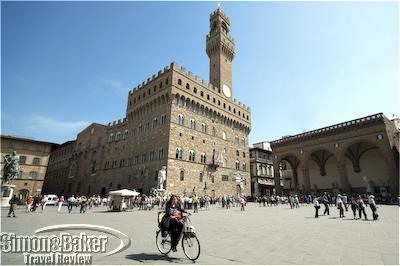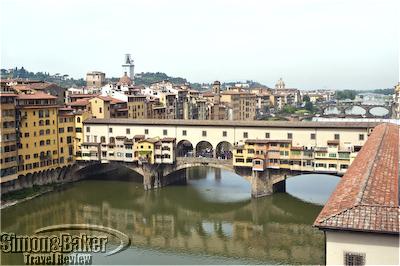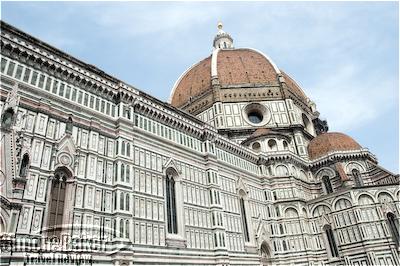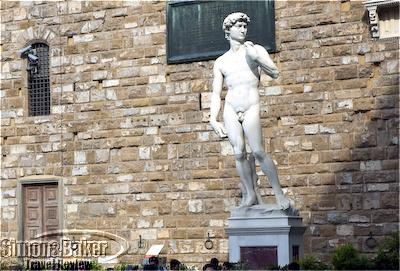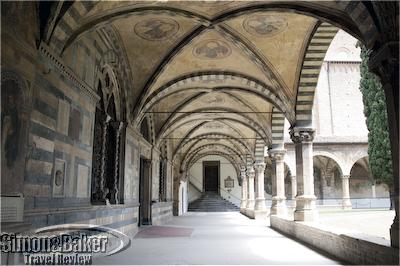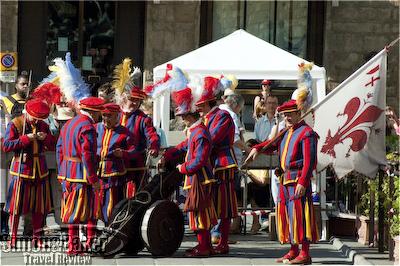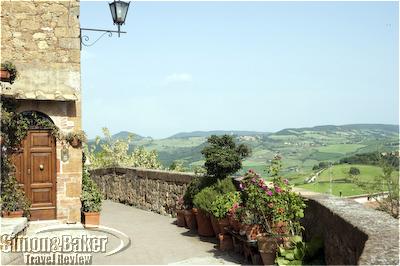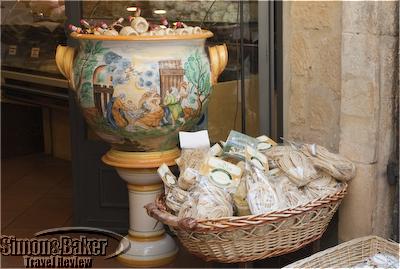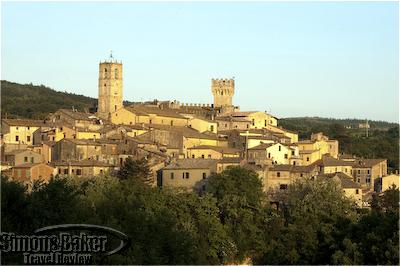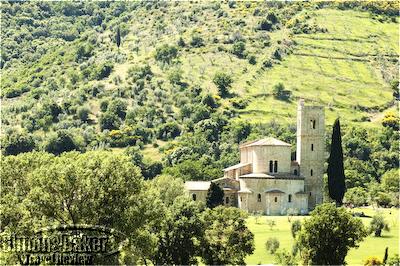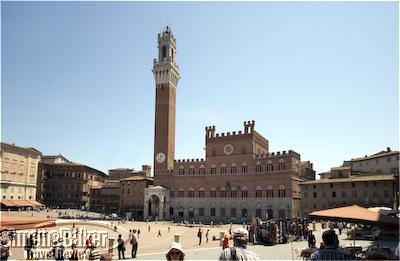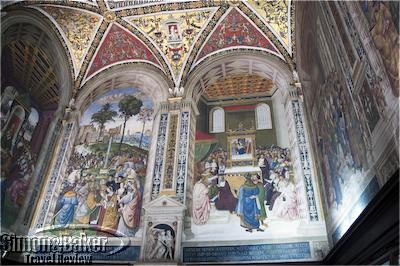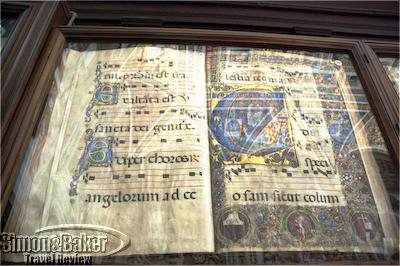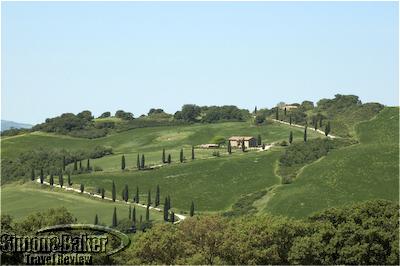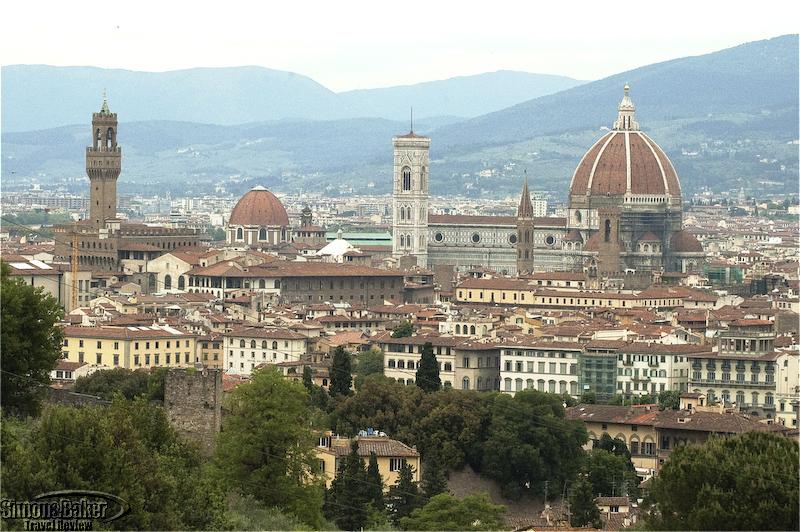
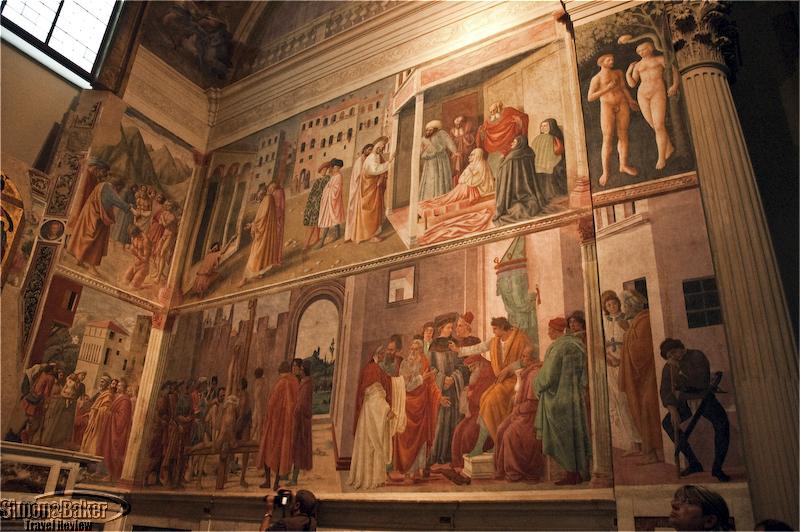
With its history spanning well over two millennia, from the Etruscans whose civilization peaked during the seventh and sixth centuries BC, to the Romans to the Renaissance, Tuscany is considered one of the greatest repositories of artistic treasures in the western world. However, today Florence is most widely recognized as the symbol of Tuscany’s Renaissance, due in great part to the dominant ruling family of the period, the Medici. Their far-reaching patronage of the arts, emulated by other powerful families, created an environment where artists could mature and flourish.
Fillipo Brunelleschi’s first architectural commission, the Ospedale degli Innocenti (Hospital of the Innocents or Foundling Hospital) with the nine semi-circular arches of its loggia, set the stage for the development of a style based on classical antiquity. He went on to design such landmark churches as the Basilica di San Lorenzo , and Santo Spirito di Firenze , and his crowning glory: the dome of the Duomo , or cathedral of Florence. To date, Brunelleschi’s dome remains the largest brick and mortar dome in the world. Donatello’s bronze of David, commissioned by Cosimo the Elder de’ Medici for the courtyard of his own palace, now at the Bargello, is the sculptor’s most celebrated work and believed to be the first known nude statue created since antiquity. His work set the stage for another world-class nude David: Michelangelo’s 17 foot (5.20 meter) white Carrara marble masterpiece. Florence was also home to some of the greatest painters of the era, among them Botticelli, Masaccio, Raphael, Filippo Lippi and Leonardo da Vinci, whose masterpieces still fill the churches and museums of the city.
But there is more to Tuscany than Florence. The region abounds with medieval hill towns with their own important cultural heritage, among them Siena whose Piazza del Campo is regarded as one of the greatest medieval squares in Europe. San Giminiano is famous for its many towers that have remained intact since the thirteenth century; and picture-perfect fortified villages perched on high ridges such as Montepulciano and Pienza overlook vistas unchanged since they served as the backdrop for Renaissance paintings. Then there are the wines! While Chianti may be synonymous with Tuscany in the mind of many, and the area’s many wineries well worth a visit, for me the ultimate Tuscan wine experience is Montalcino. Located in the stark grandeur of the Val d’Orcia, this loveliest of medieval villages traces its wine making tradition back to the fourteenth century to produce the prized Brunello di Montalcino.
Faced with such a munificence of historic, artistic and natural wonders, we determined to avoid turning our Tuscan holiday into a two-week cultural marathon. We first lingered in Florence for a week, where we balanced our daily diet of museums and architectural treasures with extended antipasti pauses; and enjoyed from shaded terraces the bustle of Florentine life. We then escaped to the serenity of the Sienese countryside. With our base a peaceful country villa in a bucolic setting at the edge of the Val d’Orcia, we ventured on daily explorations of villages and wineries, and yes, the occasional museum and cathedral still. All the while making mental notes of places not to be missed… next time.
Electrical Current 220 Volts
Location In central Italy, 140 miles (230 kilometers) northwest of Rome
Technology High-speed Internet connectivity was widely available. There was GSM cell phone reception wherever I went.
Time GMT/UTC plus one hour (e.g. Central European Time)
Transportation The cities and villages of Tuscany with their compact center and narrow, cobblestone streets were best visited on foot. To visit the countryside and travel between cities, although public transportation (buses and in some cases commuter trains) was available, I preferred the flexibility of renting a car.
Bargello Built in the mid-thirteen century as the residence of the Podestà, the highest magistrate of the Florence City Council, this small medieval fortress is the oldest public building in Florence. Later turned prison and barracks, it became a national museum in 1865. In addition to a large collection of Gothic and Renaissance sculpture (including Donetallo’s David), the Bargello featured an extensive display of glazed terracotta works by Andrea and Giovani Della Robia. I found it especially pleasant to linger along the open loggia and under the arches of the cloistered courtyard to enjoy a quiet al fresco moment right in the center of the city.
Brancacci Chapel The most memorable moment of my visit to Florence occurred in Santa Maria dell Carmine, a semi-deserted unassuming little church of the Oltrarno (the artisan neighborhood on “the other side of the Arno”). Here, in the Brancacci Chapel I was able to experience the incandescent splendor of the recently restored frescoes by Masaccio (who depicted biblical scenes using the setting and likeness of his contemporaries).
Beyond Florence
Duomo The Basilica di Santa Maria del Fiore or Duomo is one of the largest churches in Italy and one of the major tourist attractions in Tuscany. The exterior is faced with white marble panels outlined in green and pink. Started in 1296 in the Gothic style, it was completed in 1436 (with the Brunelleschi dome). The façade was left bare until the nineteenth century when it acquired an elaborate Gothic Revival façade.
Gallery Of The Accademia is part of the Academy of Fine Arts. A number of Michelangelo’s statues were displayed there, including his four unfinished Prisoners, intended for the tomb of Pope Julius II, and his world-famous David. Originally set on the Piazza della Signoria , the statue of David was moved to a specially constructed gallery in the Accademia in the nineteenth century, while a copy stands in its place outside the Palazzo Vecchio . The art collection, mainly works from the Gothic and early Renaissance periods, displayed here was originally assembled to educate students.
Montalcino This charming hilltop village traces its origins to Etruscan times. Its medieval walls were erected in the thirteenth century when the city fell under Sienese control. Montalcino offered a commending view of the Val d’Orcia and its winding cypress-lined country roads. Its rolling hills were streaked to the horizon with the vineyards that produce some of Italy’s most esteemed red wines, the Brunello di Montalcino and Rosso di Montalcino. It was my good fortune that I was able to visit Altesino, a leading local estate. Managing Director Guido Orzalesi graciously led me on a tour of the entire production cycle from the neat rows of vines, each punctuated with a thriving rose bush (for pest control), to the state-of-the-art aging cellars and bottling operation. A memorable tasting of Altesino’s prized vintages concluded the visit.
Museum Of San Marco This twelfth century Dominican monastery was restored by Cosimo the Elder de’ Medici in 1440, who entrusted the work to his favorite architect Michelozzo. With its elegant cloister and spacious sun-filled library, the building offered a superb example of Renaissance conventual architecture, which was further enhanced by the perfectly preserved frescoes of Fra’ Angelico that decorated the cloister, refectory and the brothers’ cells. Additionally, the library contained a stunning collection of elaborately illuminated manuscripts.
Piazza Della Signoria And Palazzo Vecchio The Palazzo Vecchio has been the political center of the city since medieval times. It opens on the Piazza della Signoria, which remains to this day one of Florence’s most famous and busiest squares. The visit of the Palazzo Vecchio included the soberly elegant private apartments as well as the internal courtyard and the grand public rooms with their elaborately frescoed walls and ceilings to give an interesting insight into the life of Renaissance aristocracy.
My personal favorites included these less frequented gems:
San&Rsquo; Antimo Abbey Another Val d’Orcia jewel, San’ Antimo was built in early the early twelfth century in a remote pastoral setting of ancient cypress and olive trees. It is reputed to be one of the most beautiful Romanesque churches in Italy. It certainly is one of the most beautiful and best-preserved ones I have ever seen.
Cost of visiting For American travelers, with the exchange rate of the dollar versus the euro at an all-time low, prices were generally expensive.
Uffizi Gallery Built in the mid-sixteenth century for Cosimo I de’ Medici to house magistrates, administrative offices and the state archives, the Palazzo degli Uffizi (Italian for offices) was located between the Arno and the Palazzo Vecchio . The third floor held a mind-boggling collection illustrating the evolution of Italian art, displayed chronologically from Gothic to late Renaissance and beyond, in rooms opening onto a large gallery running the length of the building. The gallery was lined with antique marble statues. It also offered a superb view of the Ponte Vecchio and the Arno. The rooftop terrace coffee shop had a close up view of the tower of the Palazzo Vecchio and the dome of the Duomo.
Reviewers Article and photographs by Josette King
Would You Visit Again? Yes
